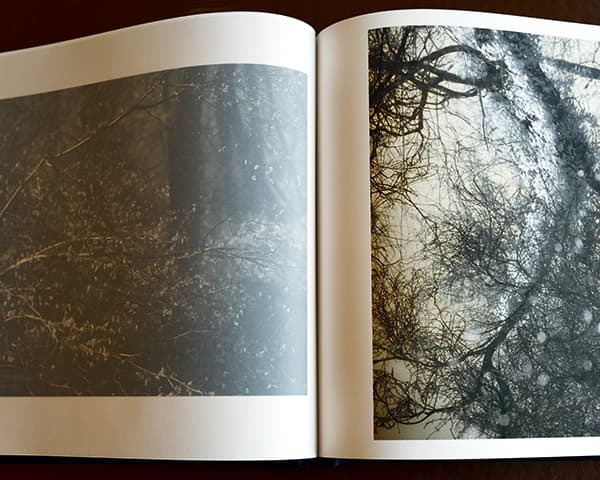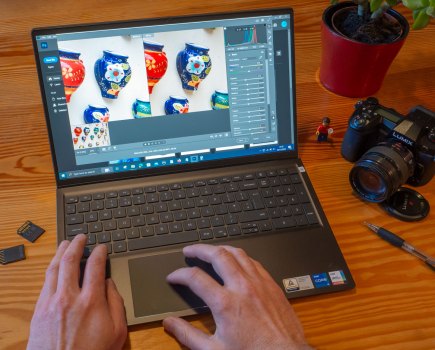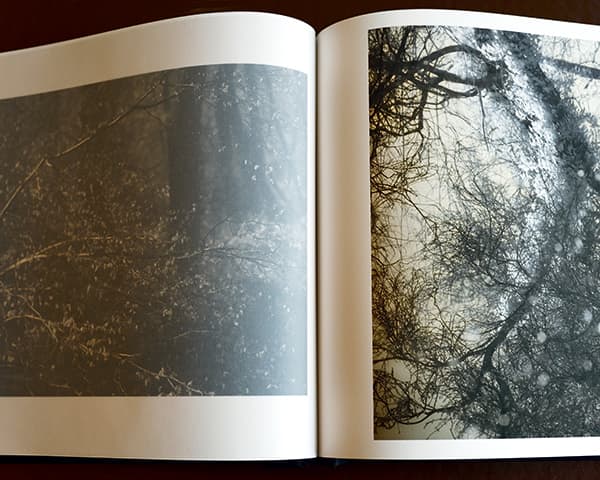
Building a portfolio guarantees that your images will live on after you
I have read many articles over the past year that examined the risks of an all-digital legacy. The crux and central theme of these views are that, as photographers, if we create a purely digital portfolio, then eventually it is at a real risk of being lost – in fact, it’s pretty much guaranteed. All the backups in the world won’t protect your photography if no one else knows how to view or access your images after you’ve gone. I certainly sat up and paid attention to this sentiment – it all seems so utterly pointless if we create JPEGs that even our own family take little more than a passing interest in.
My father was a great watercolour artist who unfortunately died suddenly in 1990. My view of his artistic talent is not just a vague memory or romantic notion I have from childhood. Twenty-six years on, some of his pictures are on my walls and they are a constant reminder of his artistic work and impressions, and they are now deep-rooted in me. I don’t care whether anyone else agrees with my view of his skill or not, as for me the evidence is there.
One of my favourites, which I call ‘Canadian Birches’ (painted in 1967) is probably the reason why I’m compelled to photograph trees. So what am I creating for my children and others to remember me by? ‘Not enough’ is the simple answer – I want to leave behind something more than a couple of magazine covers and printed articles, nice as they are.
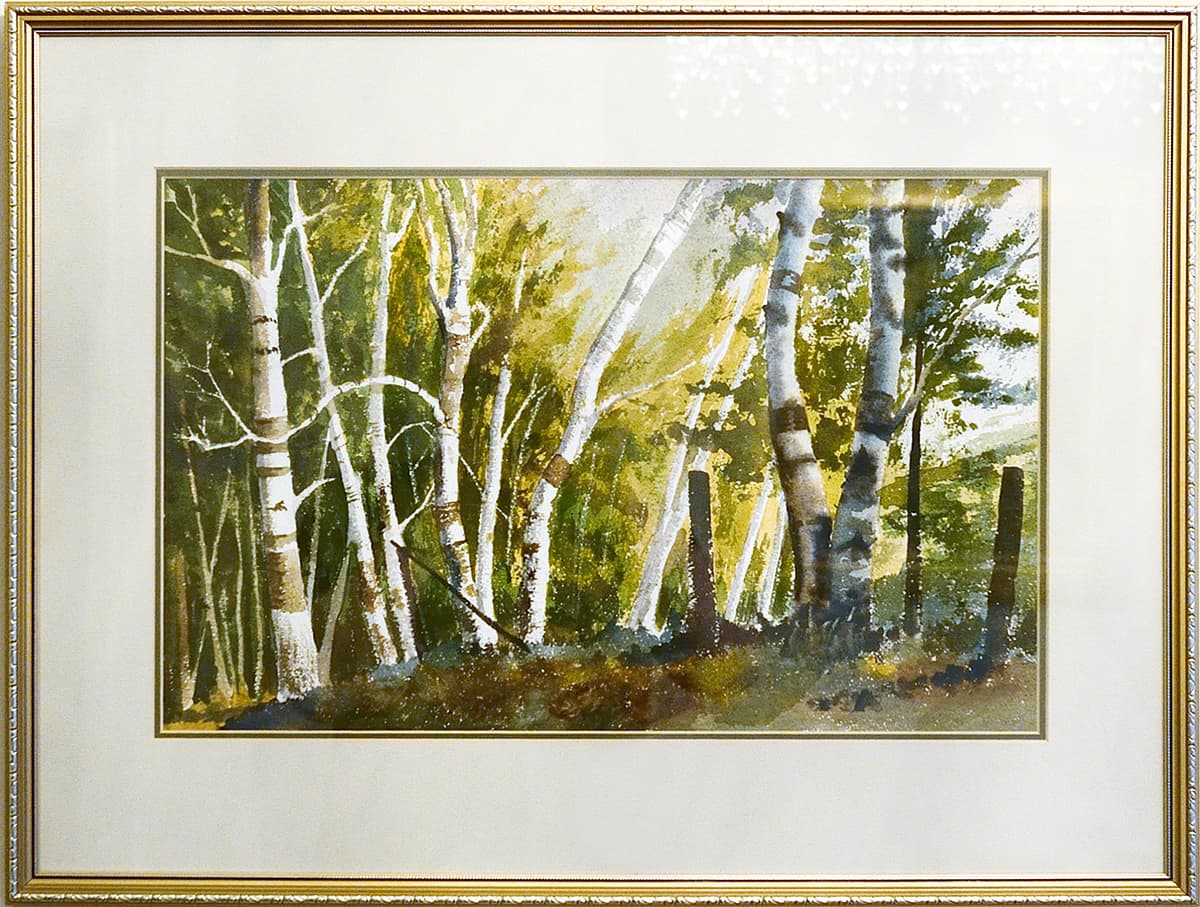
Russ gets inspiration from his father’s watercolour work
Reluctance to print
But why the general reluctance to print? Have we fooled ourselves into believing that digital photography is somehow cheap, disposable or worthless? I do wonder and have started to evaluate the excuses I’ve made in the past. I’ve convinced myself that part of the problem is available wall space – there’s only so much real estate in my house for 80x60cm frames. I also feel narcissistic about printing and framing my own work for my own viewing – a feeling that I can’t quite shed just yet.
So what’s the answer? Well, other than getting your work professionally published, it’s very simple – you have to take ownership and address this issue for yourself. I’ve begun to produce what I hope will be a series of printed portfolios while working on building towards exhibitions of framed work.
So where to begin? Above all, I wanted a professional portfolio. My criteria were pretty strict and the benchmark was high: a level of quality in the product that would reflect the craft, time and effort I put into my photography; a bespoke design that I would have some control over; a durable product, something to last maybe 50 years or more. Finally, I wanted something visually strong with a timeless quality and lasting appeal, a tactile experience, but nothing that would leave my photography in the shade – a tricky balance to strike.
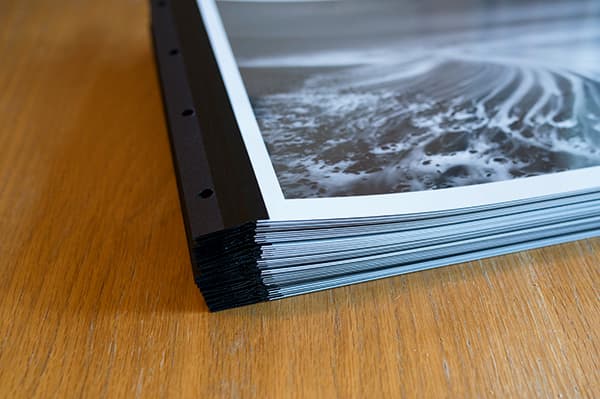
Level of exclusivity
I knew that meeting my list of demands wasn’t going to be cheap, and I wanted a level of exclusivity. I didn’t want to walk into WHSmith and see the product on the shelf being bought by any number of art students for their coursework. I don’t take short cuts with my photography and I wanted it to be displayed in the best possible way, so after a week of questions back and forth to various suppliers I narrowed my choice to a family business based in Devon (Hartnack & Company), which created a bespoke product for me.
From design to delivery, the process took three weeks and I then had the start of something that looked like it would earn its place between Kenna and Strand on my bookshelves. Most of all though, it met my criteria as the beginnings of a real print legacy, something for my children and grandchildren to cast their eye over in years to come.
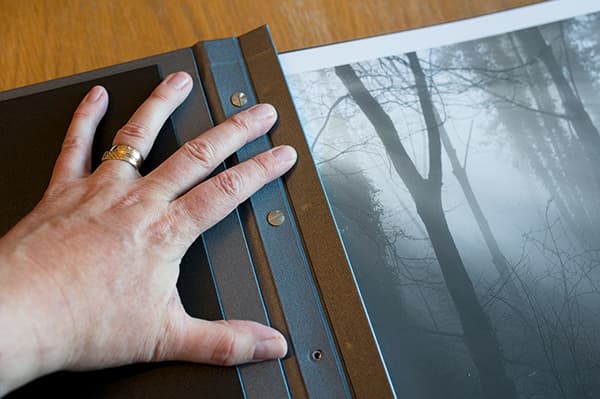
Getting the look and feel of the portfolio makes a huge difference to the overall success of the project
Image selection
I knew that filling the portfolio was going to be the most substantial and difficult part of the project. It was important for me to have an outline high-level plan of what I really wanted to get out of it. Perhaps the most critical decision of all was the image selection – it should go without saying that the prints are everything, the core focus of the whole project. Not only would they need to match the standard of the very high-quality materials selected to house the work from a technical and presentation point of view, but also they would need to go beyond that and positively shine. The print needed to be king. I would be mortified if I got the impression that the slip case and binding outshone the contents. It needed to be the along the lines of, ‘Wonderful photography. Oh, and I love the case.’
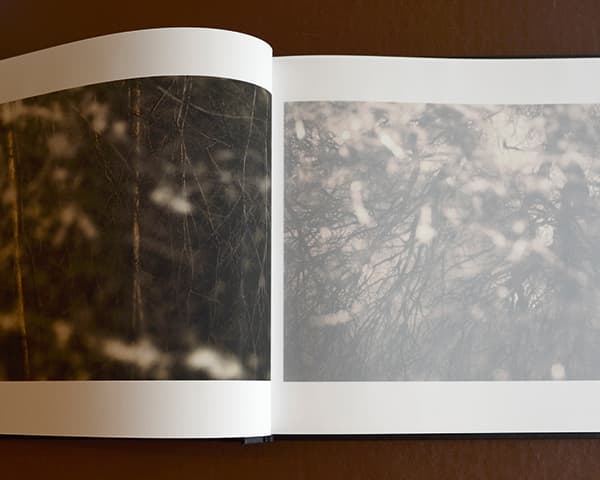
It took about three evenings to get to a point where I thought I’d nailed the selection and sequencing. In the end, a total of 40 images just felt right. The whole process was subject to a lot of reviewing and I changed the order a hundred times, deleted and added images, until I finally arrived at something I was happy with.
The flow was based on how textures, lines, patterns, colours, technique, atmosphere and even location played a part in trying to create a ‘storyboard’ of my photography. There’s a degree of subtlety to the flow and, of course, it’s based on my own decision making, so some might disagree with the order and final selections, but I also wanted to have a strong back-to-front series as well as front-to-back. To my eye, I think I pulled it off – following the final print and construction I can honestly say I wouldn’t change a thing.
After all the time and effort, it was finally there. It’s genuinely something to be proud of and it certainly met my vision and objectives.
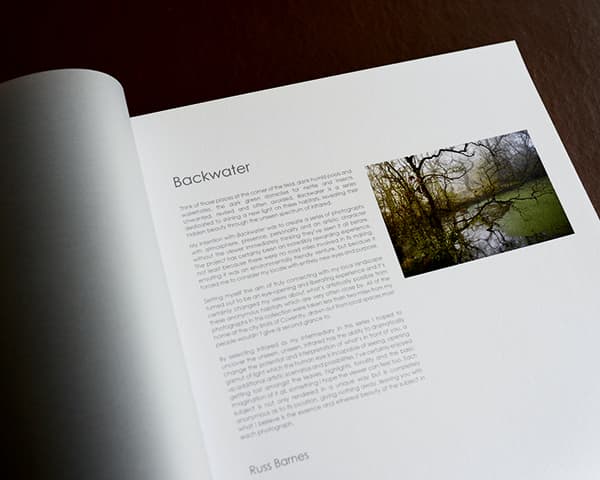
It took a lot of work, but the results were well worth the effort
The kit-based approach to consider
I found building my initial photography portfolio using bespoke options incredibly satisfying, but there’s no doubt it wasn’t the cheapest way of doing things. If you own a printer, there are a few suppliers who provide a more cost-effective kit-based approach to building a printed portfolio. So when I came to produce a further collection of images, I chose the Hahnemühle FineArt Inkjet Leather Album.
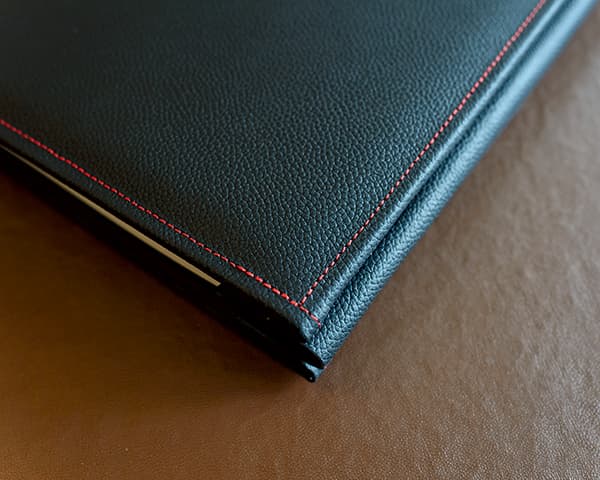
If you want a very satisfying professional finish, kit-based systems won’t disappoint
The advantage of this set-up is that everything is designed and created to work perfectly together for a beautiful end product. I opted for a 12x12in red-stitched leather screw-post portfolio. They provide translucent page dividers and, unusually, you can buy it with double-sided inkjet paper to create the look and feel of a book, should you be so inclined. The paper is also already hole-punched and scored, ready for assembly into the cover.
I must say the end result was incredibly impressive and delivered a very professional look while being more cost-effective than the bespoke approach. I will certainly be buying more of these to print my work.
Handmade photo books
Having got the bug for producing printed portfolios, I looked at options to take things further and investigated the possibilities of handmade book making. Part of my attraction to photography is the artistic craft involved in the process, and with print in particular. I love the tangible aspect of a physical result. Printing is often seen as an add-on skill in photography, but to me it’s an integral part of the image-creation process. Handmade books are just a further extension of that.
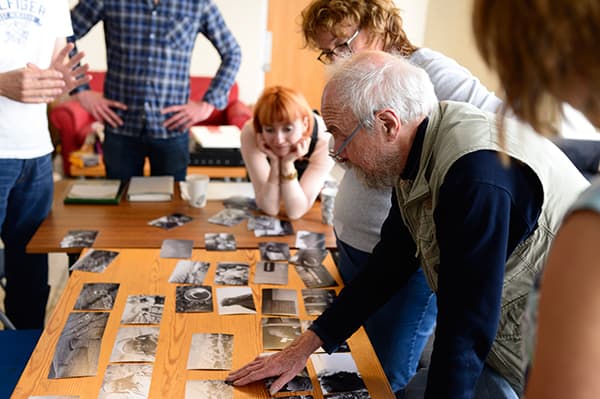
Concentrated minds at John Blakemore’s bookmaking workshop
After excellent feedback from associates on Twitter, I booked myself onto master photographer John Blakemore’s bookmaking workshop hoping to pick up the necessary skills needed to build my own volumes by hand. It was a wonderful weekend with perhaps the most interesting aspect focused on image sequencing and learning to tell a story with images. This is a highly recommended experience that has helped me look at my photography from a new angle.
I now have the skills to build any kind of book I wish from scratch, completely bespoke collections of work that fulfil my aim of producing something genuinely artistic and compelling to inspire others.
Things to consider
I found there were a surprising number of choices available for photography portfolios, and narrowing it down wasn’t easy, mainly because in the beginning I didn’t entirely know what I was looking for. I also made some mistakes by not thinking enough about how I would actually mount the images in the portfolio to construct the final product. Fortunately, through a degree of trial and error, I ended up with something I was exceptionally happy with. However, the journey wasn’t without its pitfalls and frustrations.
The other thing to think about is whether to print your own images or outsource the process to one of a plethora of labs. In my view, printing your own work is essential to appreciate fully the true craft of what, to many people, photography is all about – the final print.
Why do I mention all this? Well it’s simple really – planning is everything.
Personalisation
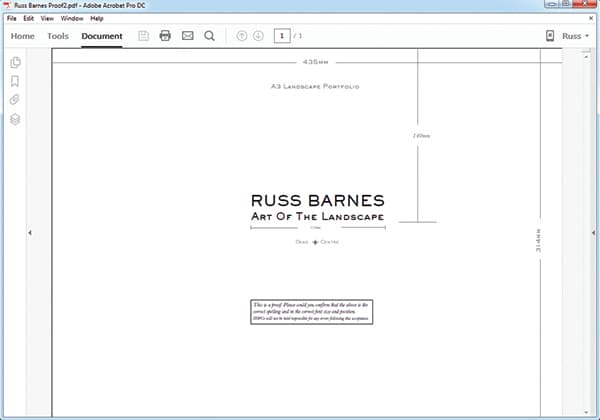
If you decide to go ‘all in’ on a fully bespoke portfolio, one of the first choices you need to make is how you want the portfolio to be labelled and titled. Fortunately, Hartnack & Company helped me a lot and provided an accurate proposal for sign-off before production.
Portfolio colours
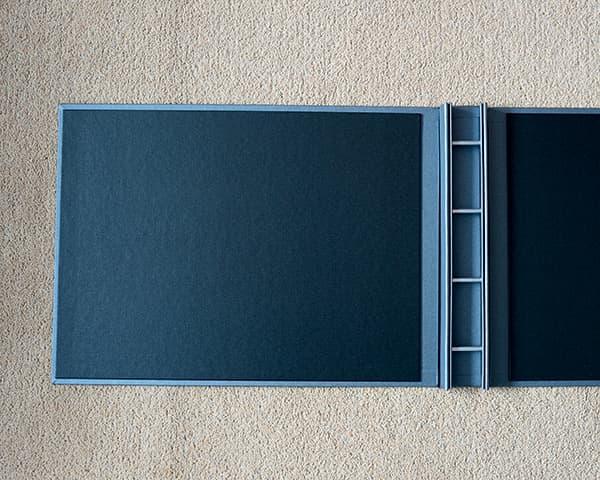
One of my objectives was to ensure that the look and feel of the portfolio had a touch of class without eclipsing my photography. I chose a steel-grey Buckram cloth and charcoal contrasting inserts to ensure that all the focus remained on my photography.
Image selection
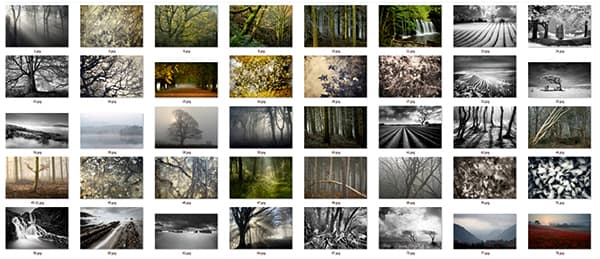
It might sound obvious, but image selection is critical, as is the sequencing of photographs throughout the portfolio. I worked hard on ensuring that I selected photographs that were representative of my work without being too repetitive.
Mounting decisions
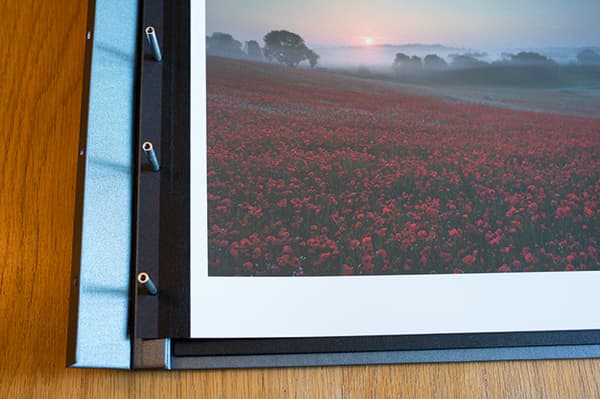
I didn’t think enough about mounting the prints at the outset. I decided late on that directly hole-punching my prints for a screw-post binding was a bad idea and then worried about how I could achieve it. Be clear from the start how you will fix your prints into the portfolio.
Volume
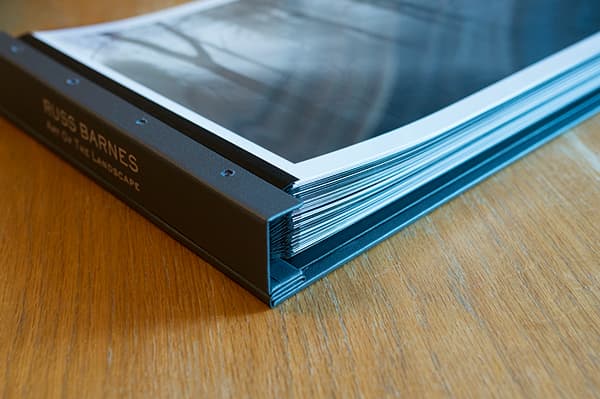
A decision on the number of prints featured was important. Too few and it would be a bit light, while too many would be overwhelming. I settled on 40 for my first project and used 30 in my second. Don’t underestimate the physical weight of printed work, either.
Kit list
Paper
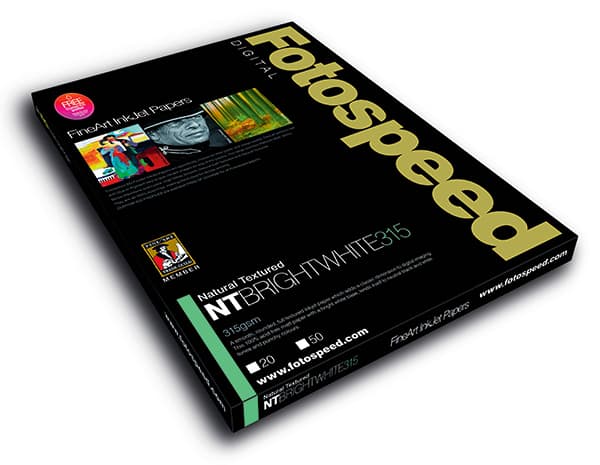
Different papers produce vastly different results, so it’s worth getting hold of some sample packs before embarking on a print project and making a final choice.
Protective spray
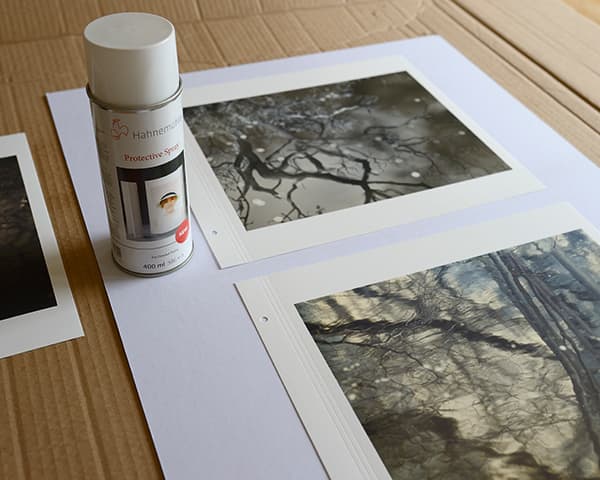
Buying some protective spray for my prints proved to be invaluable. At £15 a can it might seem like another expense, but it ensures the print is shielded for handling.
Mounting solution
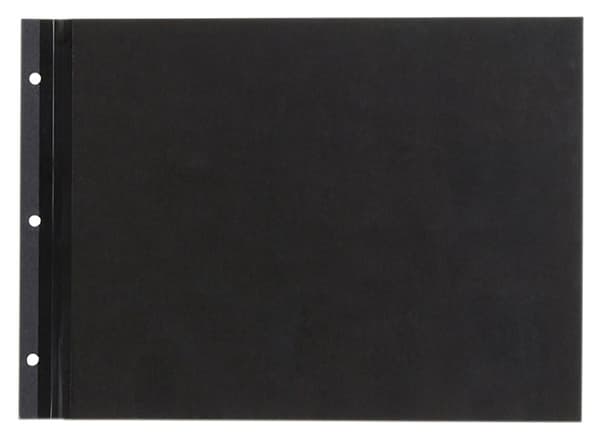
On my initial project I didn’t get my mounting solution right. Eventually I bought Flex-Hinge Polyester Sheet Protectors, but they were expensive. You need to think carefully about your mounting product selection.

